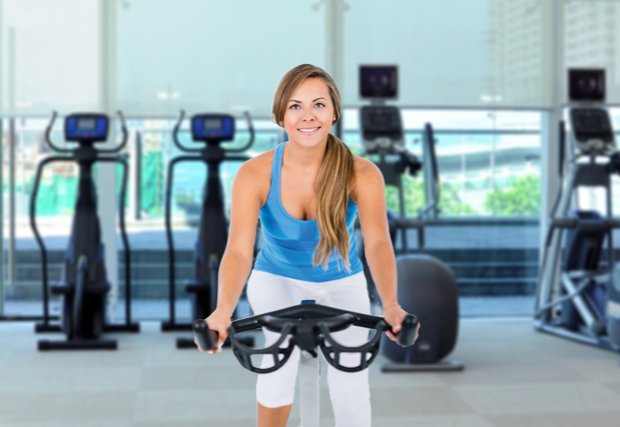As the transition into colder weather happens, many people move their workouts inside to avoid the elements. “There are benefits to both settings from a cardiac perspective, but being outside is the optimal choice,” says Cardiologist Janet Utz, MD.
Breathe the Fresh Air
Exercising outside is on a different level. Studies by the National Institutes of Health show that those who exercise outside experience more feelings of well-being and less stress and anxiety. You get the benefits of crisp, fresh air, a dose of vitamin D from the sun, scenery and a sense of vitality. “There are so many lightweight clothing options that make it easy to get a great workout in,” says Dr. Utz. “You have more area in which to move and can break up your routine. Plus, you have less exposure to colds and viruses because you are not in a crowded gym.”
But depending on your activity, you may get a more intense workout without realizing it. Running is a perfect example. “When you run outside, there are usually grades and slopes in the terrain, and also wind resistance. As a result, the body works harder because using different muscles and tendons is required to maintain your balance and footing,” she states. You can actually burn more calories than if you were running on a level treadmill at the same speed.
More Options Inside
If you aren’t a fan of the cold weather, a gym offers a variety of equipment and classes, and in some facilities, pools and saunas and even personal trainers. If you work out at home, you may have access to online classes, DVDs, some free weights, a yoga mat and perhaps a stationary bike or treadmill. “Doing a variety of activities will work more muscle groups in your body, which helps break up muscle memory,” she says. “Try not to do all of your workouts just using a treadmill.”
If you like riding on a bike, a stationary bike can generate more of a calorie burn than riding outside, especially if you participate in a spin class. Lifting free weights, doing circuit weight training or using smaller weights during a cardio class can help build lean muscle and burn fat. If you are using the gym during cold and flu season, Dr. Utz advises wiping down the equipment with disinfectant prior to using.
Overall, it comes down to personal preference. If it’s really cold outside and you have limited time, having the option to ride a stationary bike, walk on the treadmill or do a quick cardio workout on DVD is a great solution to help keep you on track with your fitness goals.
Check with your healthcare provider before beginning any new exercise routine.
Discover more tips for healthy living here.
Staying Safe While Exercising Outside
Don’t let the chilly weather prevent you from enjoying a brisk walk or run, or any other activity. By taking the right precautions, you can benefit from the exercise and stay safe at the same time.
CHECK THE WEATHER. Know what to expect with temperature, wind, or precipitation so you can dress appropriately.
CARRY YOUR CELL PHONE. In case of accident or injury, you will be able to call for help. Many cell phones also have a flashlight or emergency blinker feature, so in case you lose signal, you can still try to summon help.
LIGHT IT UP. Wear reflective or light-colored clothing. It helps make you more visible to drivers.
DON'T FORGET TO DRINK UP. It’s important to stay hydrated before, during and after exercising in the cold. Dehydration is less noticeable in cold weather, so it can sneak up on you quickly.
TURN DOWN THE VOLUME. If you wear headphones, keep the volume low enough so you can be aware of your surroundings.
SHARE YOUR LOCATION. Let your family know where you are going and what time to expect you back, especially if you are going alone.
WHAT TO WEAR. Wearing three layers is your best bet with cold weather. The first layer absorbs moisture away from your body; the middle layer, wool, down or fleece, acts as an insulator; and the outer layer should be wind and water- resistant. Avoid wearing cotton as it traps moisture.

